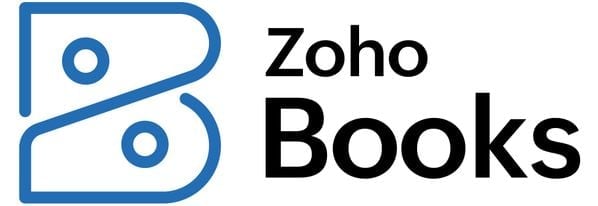The 6 Most Important Accounting Formulas You’ll Ever Need to Know
The most important accounting formulas are practical and intuitive, making them easy to remember and apply.

Many, or all, of the products featured on this page are from our advertising partners who compensate us when you take certain actions on our website or click to take an action on their website. However, this does not influence our evaluations. Our opinions are our own. Here is a list of our partners and here's how we make money.
Remember high school math, when you had to memorize dozens of accounting formulas in order to pass the final exam?
Fortunately, in the real world, you'll only need to use a fraction of the accounting math you learned in school. Here are our top six formulas to help you stay on top of your small-business accounting.
1. The balance sheet equation
Also known as the basic accounting equation, the balance sheet equation explains exactly how the balance sheet balances. This equation is:
Assets = Liabilities + Equity
In other words:
What you own (assets) = What you owe (liabilities) + Your contributions or retained earnings in the business (equity)
This makes our list of important accounting formulas because once you understand it, you can see at a glance how healthy your business is. For example, let’s say the balance of your bank accounts, plus your other assets (like computers, furniture, etc.) and your accounts receivable total $15,000. This is the “assets” portion of the balance sheet, or the entire top portion of it.
Now, let’s say your liabilities total $5,000. This is the total of all debts you owe — credit cards, lines of credit, accounts payable, etc.
This means your equity — the total of your combined contributions and profits you have not taken out of the business in the form of draws and distributions — is $10,000. Congratulations! You very likely have a healthy and profitable business, assuming you are not contributing vast amounts of resources to the business to keep it afloat.
2. Current ratio, or acid test ratio
This important concept is high on the list of important accounting formulas and tells you how quickly you can pay your short-term debts. The equation is:
Current Assets / Current Liabilities = Current Ratio
Using our example above, let’s say of the $15,000 in total assets, $8,000 is in current assets. A current asset is cash or something that can easily be converted to cash, such as accounts receivable and short-term investments.
Now, let’s say, of your $5,000 in liabilities, $2,000 is current. A current liability is debt due within the next 12 months. Accounts payable, credit card balances and short-term lines of credit are all current liabilities.
Using our equation above, the current ratio is 4 ($8,000 / $2,000 = 4). This means you have four times as many current assets as you do current liabilities, or you could pay your short-term debt four times before running out of cash.
Ideally, your current ratio should always be greater than 1. A current ratio that is too high, though, can indicate you aren’t managing your capital efficiently, and as a result your business growth could stagnate.
3. Net income
Net income, or the bottom line, is a measure of profitability. The equation is:
Income – Expenses = Net Income
This important accounting formula tells you at a glance if you are spending too much in relation to your revenue. It’s important to note, however, that net income does not equal cash in the bank. Payments on liabilities — the debts you owe, which appear on the balance sheet — are not included in the net income equation. Neither are contributions of capital, draws and distributions, or asset acquisition.
The net income equation, then, shows you how profitable your business’ operations are, but not how healthy your cash flow is.
If you need to create an income statement, you can do so with QuickBooks.
4. Cost of goods sold
Of course cost of goods sold must make our list of important accounting formulas. Most accounting and point of sale systems will calculate cost of goods sold for you. However, sometimes it becomes necessary to manually make this calculation. The formula for cost of goods sold is:
Beginning inventory value + Purchases of inventory – Ending inventory value = Cost of goods sold
Let’s say you own a lumberyard. At the beginning of the month, you had 10,000 2x4s in your yard, valued at $2 each. This means you started the month with $20,000 worth of 2x4s. Over the course of the month, you bought 5,000 2x4s, again at $2 each. That’s $10,000 worth of 2x4s.
At the end of the month, you count your 2x4s, and you have 8,000 left. Since the cost of the 2x4s didn’t change, you have $16,000 worth of 2x4s. Plugging these numbers into the equation, you can calculate your cost of goods sold:
$20,000 + $10,000 – $16,000 = $14,000
Therefore your cost of goods sold for the month was $14,000.
You can now use your cost of goods sold number and your total sales number to determine your gross profit.
5. Gross profit and gross profit margin
Here is another critical concept that makes our list of important accounting formulas.
Gross profit is the difference between your total sales income and your cost of goods sold:
Sales – Cost of goods sold = Gross profit
Remember those 2x4s you had in your lumberyard? Let’s say your total sales of 2x4s for last month was $21,000. We’ve already calculated your cost of goods sold above, so you can easily determine your gross profit:
$21,000 – $14,000 = $7,000
Your gross profit last month was $7,000.
Now, let's calculate your gross profit margin:
Gross Profit / Sales = Gross Profit Margin
Or:
$7,000 / $21,000 = .33
Your gross profit margin is 33%.
As you can tell, anything you can do to increase your gross profit increases your gross profit margin. And increasing your gross profit margin has a direct impact on your net income. Increasing your gross profit margin by decreasing cost of sales lets you grow your business’ profitability without increasing sales.
For example, let’s pretend your cost of goods sold last month was $13,000 instead of $14,000. That would make your gross profit $8,000 and your gross profit margin on $21,000 in sales 38% instead of 33%. And you didn’t have to sell more 2x4s to get there.
6. Break-even point
This formula tells you how much of your product or service you need to sell in order to cover your operating costs. This equation takes a little more work to calculate, but it’s one of the most important accounting formulas you can use in your business. You calculate your break-even point as follows:
Fixed costs / (Sales price per unit – Variable cost per unit) = Break-Even Point
Your fixed costs are your normal, recurring, predictable expenses. Rent, payroll, utilities, etc., are all fixed costs.
Your sales price per unit is the selling price of your product or service.
Your variable cost per unit is basically your cost of goods sold. That’s not the exact definition, but using your cost of goods sold will generally get you close enough.
Going back to our lumberyard example, let’s say rent, payroll, utilities, and all other operating costs total $6,000/month. You sell your 2x4s at $3 per board, and you know your cost of goods sold is $2 per unit. Your break even point, then, is:
$6,000 / ($3 – $2) = 6,000 units
Therefore, you have to sell 6,000 2x4s in order to break even for the month.
You can also calculate your break-even point in dollars:
Sales price per unit x Break-even point in units = Break-even point in dollars
Or:
$3 x 6,000 = $18,000
So, you need $18,000 in sales to break even for the month.
Why is knowing your break-even point important? The moment you exceed your break-even point, your business becomes profitable. For the 2x4s in your lumberyard, that occurs when you sell your 6,001st 2×4 in a month, or after you exceed $18,000 in 2×4 sales.
A version of this article was first published on Fundera, a subsidiary of NerdWallet.
| Product | Starting at | Promotion | Learn more |
|---|---|---|---|
 QuickBooks Online NerdWallet Rating Learn more on QuickBooks' website | $35/month Additional pricing tiers (per month): $65, $99, $235. | 50% off for first three months or free 30-day trial. | Learn more on QuickBooks' website |
 FreshBooks NerdWallet Rating Learn more on FreshBooks' website | $21/month Additional pricing tiers (per month): $38, $65, custom. | 70% off for 4 months. 30-Day Money Back Guarantee. | Learn more on FreshBooks' website |
 Xero NerdWallet Rating Learn more on Xero's website | $20/month Additional pricing tiers (per month): $47, $80. | 90% off for 6 months. | Learn more on Xero's website |
 Zoho Books NerdWallet Rating Learn more on Zoho Books' website | $0 Additional pricing tiers (per month): $20, $50, $70, $150, $275. | 14-day free trial of the Premium plan. | Learn more on Zoho Books' website |

